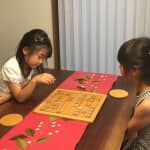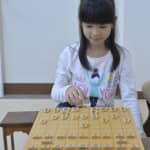Shogi 23 January 2017
Let’s Compare Nine Different Forms of Characters for Shogi Pieces!
We are going to hold Shogi lessons for parents and children who learn Shogi for the first time.
We prepare Shogi pieces of 9 different forms of characters to make the lesson even more enjoyable.
So, we would like to introduce the features of each today.
1. Kinki

We, I-tsu-tsu have Shogi pieces actually used for the 74th Meijin Title Match, the 3rd Kyoku.
The form of character written on these pieces is called “Kinki.”
“Kinki” is the most famous and familiar form in the world of Shogi pieces.
It is said that the form of “Kinki” was originated when Toyoshima Ryuzan, a piece craftsman, and known as a founder of modern Shogi pieces, copied the writing style of the Emperor Gomizunou.
This emperor’s writing was passed down for generations in Ohashi family, one of the three famous Shogi families. “Kinki” is an orthodox form of Shogi piece characters, and I think many Shogi players have used “Kinki” pieces at least once. Its powerful writing style gives elegance.
For your information, it is easy to distinguish Kinki from other forms if you look at Kaku (Bishop) piece. The upper Chinese character is rather small, and the bottom character’s horizontal line is longer than that of other forms.
2. Minase

Our past blog introduced that the origin of “Minase” was in Minase Shrine.
An acknowledged calligrapher, Minase Kanenari invented this form of characters. The form of “Minase” gives peaceful and confident impression. The then powerful men including Tokugawa Ieyasu favored “Minase,” as mentioned in our past blog.
If you carefully look at “Minase” characters, you find that its features are a thick vertical line in the character of Ou (King) and a curved line of Tokin.
3. Ryouko (Maki Ryouko)

Next, I would like to introduce the form of “Ryouko”.
It is said that “Ryouko” was completed by Maki Ryouko, one of the three famous calligraphers at the end of Edo period. Its elegant line is attractive, and it is one of popular forms of Shogi piece characters among players. Its distinguishable feature is difference between the character for Ou and that for Gyoku, another name for King. The difference between these two characters is more recognizable in the form of “Ryouko” than it is in other forms. “Ryouko” shows a peculiar vertically sweeping up line at the end in the characters for Ryuou (Dragon), Gyoku and Fu (Pawn) as it is called “characters with a mustache”.
4. Genbei Kiyoyasu
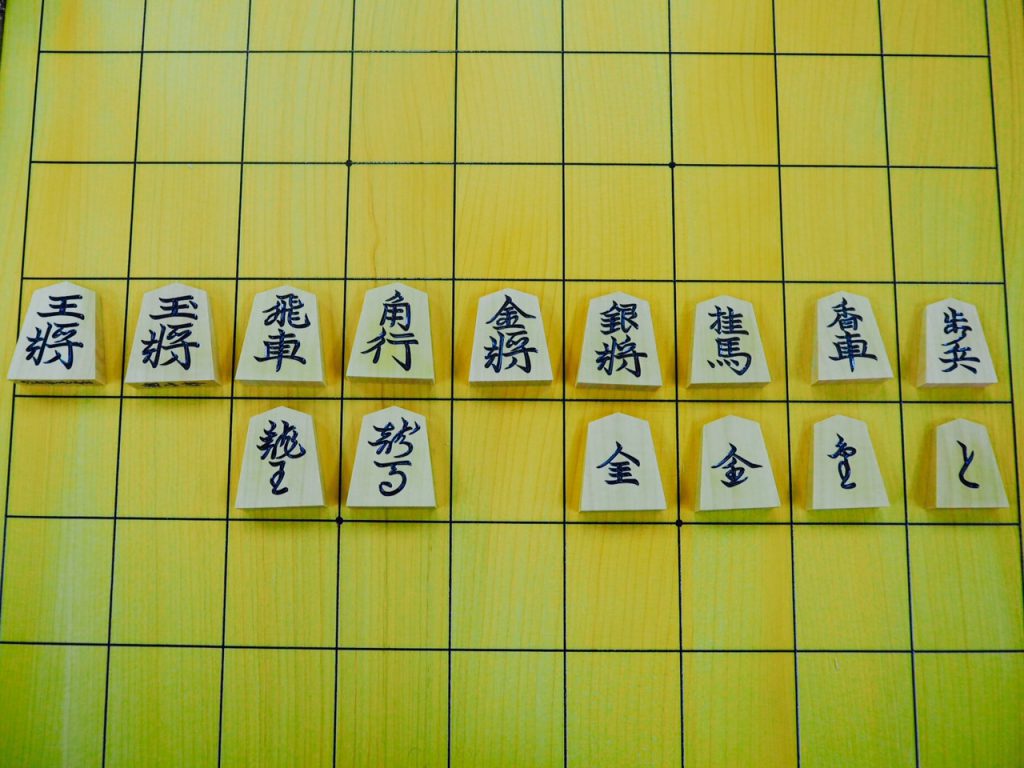
“Genbei Kiyoyasu” is said as one of the most classic forms among the Shogi piece character forms currently available in the market. It is so popular that most of Shogi piece craftsmen have made pieces of this form. However, its origin is unclear except that it was started and passed down from the era of Edo. So, it is a mysterious form in that sense.
Its feature is that the characters broaden toward the end along with the pentagon shape of Shogi piece.
5. Kinryu

It is said that “Kinryu” was not a name for a character form originally, but a name of a piece craftsman. The founder of this form was a samurai warrior named “Saita Sagenta,” and he passed “Kinryu” to the second generation named “Kouga Ujiharu” whose works were very popular at the end of Edo period.
The pointy end of the characters is a feature of this form, but I personally think that this form is hard to distinguish from others. I find a sense of tension with modesty in this form since this was created by a samurai warrior.
6. Gadou
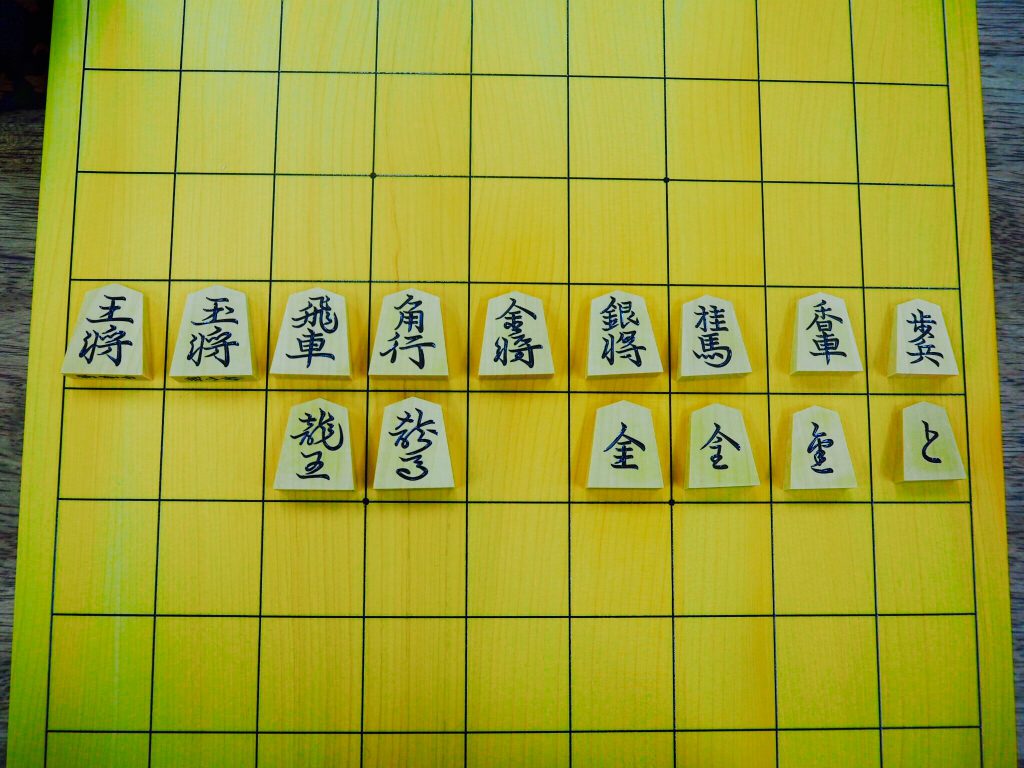
It is said that Ono Gadou, a great master of calligraphy in Meiji period completed this form. On the other hand, it was considered weird that a calligraphy master created characters for Shogi pieces. Thus, it is said that Toyoshima Ryuzan whose name was mentioned earlier was an actual founder of this form copying the writing models of Gadou.
Gadou is famous for his flowing writing style. Especially the character for Uma (horse) of this form seems to be the most refined.
7. Kishuu
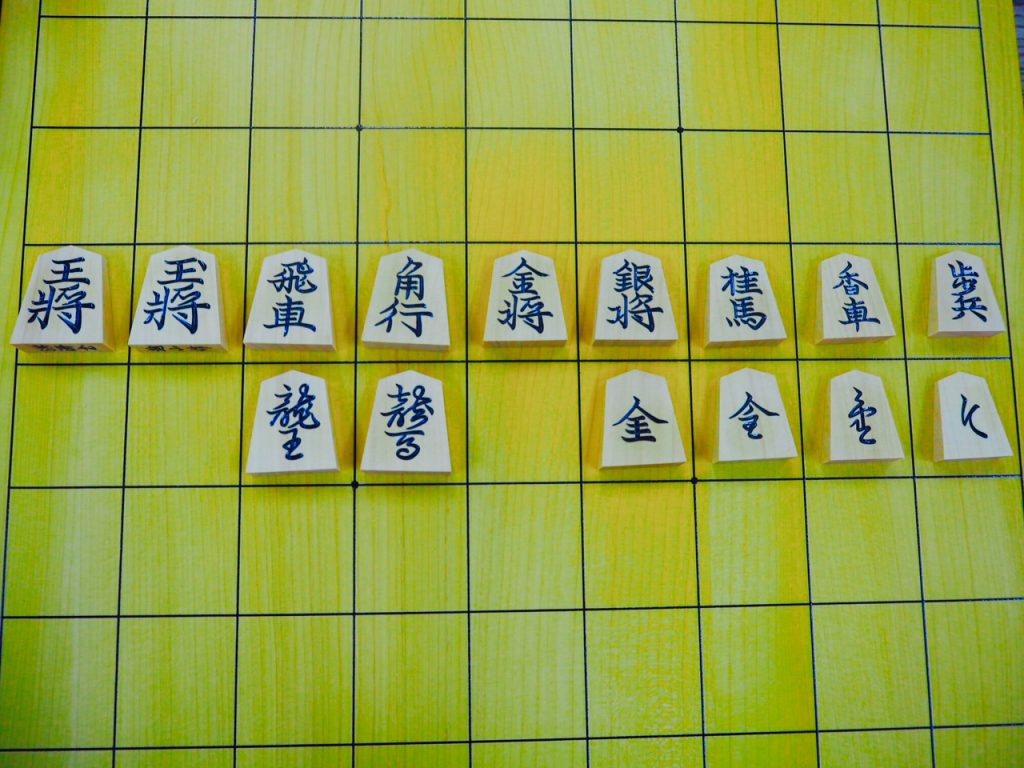
Takeuchi Kishuu was a founder of the form. He was not a professional Shogi player, but was so good as to be recommended for the 8th Dan (a rank given to relatively high-raked players).
Furthermore, it was said that he was excellent in politics, literature, the game of Go, calligraphy, and Chinese poetry. His grandfather pursued a new character form for Shogi pieces, but died without a success. As his last words, he asked his grandson, Kishuu to send the Shogi pieces to future Shogi Meijin. Kishuu accomplished his grandfather’s will.
Kinjiro Sekine, the 7th Dan, was the person who received Shogi pieces from Kishuu.
Sekine consecutively won after he got them, and Kishuu’s pieces became Sekine’s success pieces.
8. Shouryu
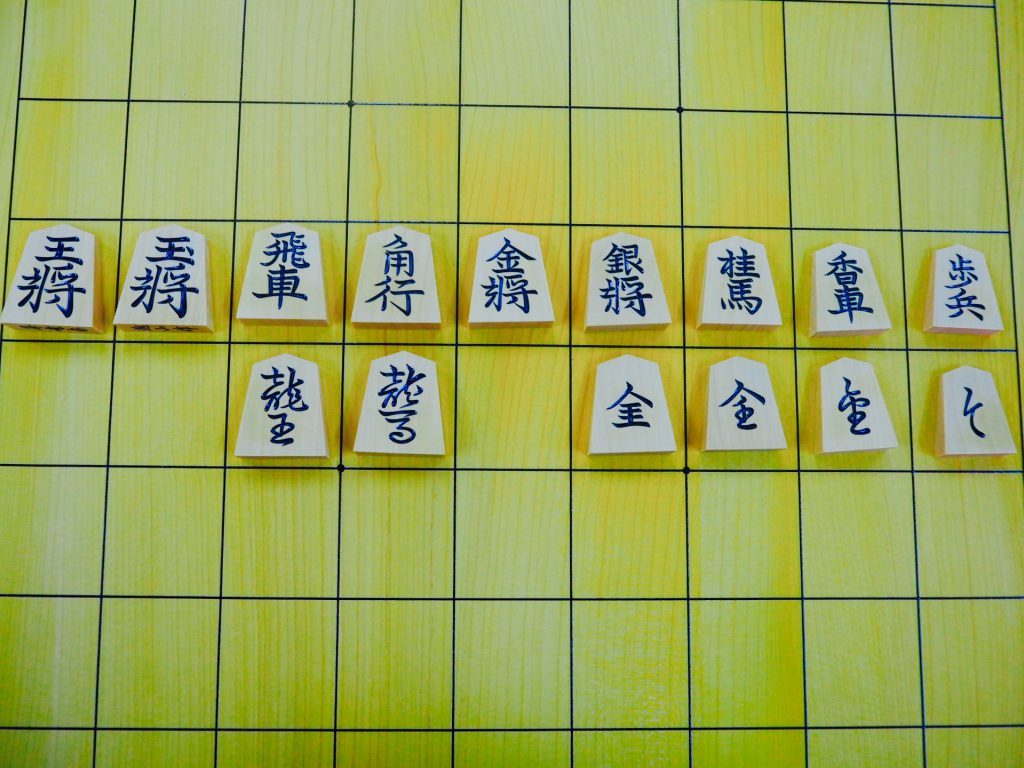
Shouryu Sai, a Shogi lover, an excellent calligrapher and a Samisen (a Japanese fiddle) player invented this form of character.
Okuno Ikkoku, an owner of Shogi equipment shop, improved Shouryu’s form to compete then popular Toyoshima Ryuzan, a Shogi piece craftsman. Okuno used the exactly the same name, “Kinki” of Toyoshima, to sell Okuno’s work which was actually completely different from Toyoshuma’s “Kinki.”
9. One letter Shogi pieces

The feature of these Shogi pieces is not exactly about a form of characters. Generally, two characters are used for Shogi pieces, but only one is used for this type. Since one-character pieces are easy to see, they are used for the matches broadcasted on TV.
We also have this type pieces since we think it’s easy for children.
We have introduced various forms of Shogi characters today. How was it?
I think that it is interesting to see uniqueness of each different form used for the same characters.
We hope that children find and experience the charms of Shogi as described in today’s post, in addition to that they enjoy Shogi game itself.
Please enjoy various forms of Shogi piece characters if you come to our lesson.
I hope that you have a chance to see difference and find your favorite forms of Shogi characters some time in the future, even if you cannot attend our lessons this time.
References:
“Koma no Sasayaki – Shogi Koma no Miryoku to Sono Sekai-“
(Whispers of Shogi pieces – The charm and world of Shogi pieces-)
“Shogi Koma no Sekai” by Masato Masuyama (Chukoron-Shinsha, Inc.)
(The world of Shogi pieces)
If you are interested in learning Shogi, check out our articles on Shogi rules!


